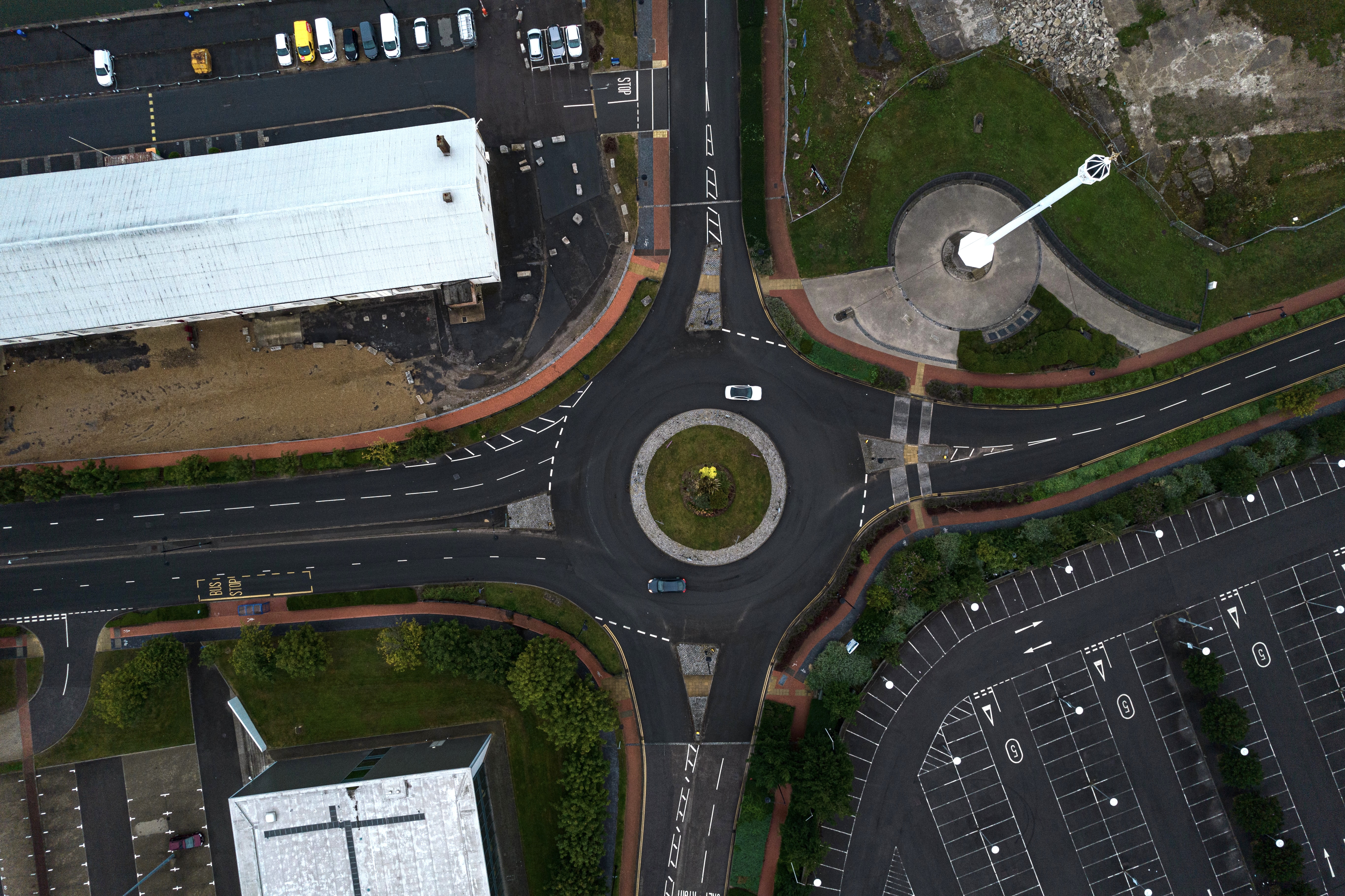Advanced Hazards Roundabouts
Now that you have learnt how to deal with crossroads, T-junctions and Y-junctions it's time to take it a stage further and learn how to deal with roundabouts safely using the M-S-P-S-G-L routine.
Roundabouts- Purpose Of A Roundabout
Roundabouts are just another type of junction and are designed to keep the traffic flowing, but equally important, to SLOW TRAFFIC DOWN!
Traffic should only flow in a clockwise direction around the roundabout. This circular system is a one-way circuit but may be made up of one or more lanes, allowing traffic to filter away into several directions. Traffic entering the roundabout must give way to traffic already on the roundabout approaching from the right.

Roundabouts- How To Approach a roundabout
As with other junctions you apply the hazard drill and take observations of the major road ahead as early as possible. Roundabouts are quite open so that you can see and assess the flow of traffic on the roundabout at an early stage as you approach. The purpose of this is to give you the time to adjust your speed so that, if possible, you can safely merge into any gaps, in the flow of traffic from the right without stopping.
You should approach in a progressive manner, bringing your speed and gears down as appropriate to the conditions. You should approach at a speed at which you can safely view the roundabout traffic while also keeping an eye on your own lane. Avoid taking observations to the right at the last minute, as this may mean stopping at the give way line when it isn't necessary.
As with any junction, the signals that you give and the lane positions that you take up will provide valuable information to other road users.

Roundabouts- Signals & Lane Positions
- Turning Left (1st Exit)
You should position to the left, or take the designated lane, and signal left on the approach, maintaining the signal until into your new road.
- Following The Road Ahead (2nd Exit)
You should again position to the left, or take the designated lane, but do not signal on the approach. As you pass the exit BEFORE the one you want you should check your mirrors and signal to the left to tell others that you intend to leave the roundabout at the next exit. Maintain good lane discipline at all times, keeping to the outside (left) edge of the roundabout. Maintain the left signal until into your new road.
- Turning Right (3rd Exit)
-
You should position to the left of the centre line, or take the designated lane, signalling to the right on the approach. Maintain good lane discipline at all times, keeping to the inside (right) edge of the roundabout until, as you pass the exit BEFORE the one you want, you should check your mirrors and signal to the left to tell others that you intend to leave the roundabout at the next exit. Maintain the left signal until into your new road.
- Leaving The Roundabout
When leaving the roundabout you should always exit to the left of your new road, or into the left hand lane of a dual carriageway.
The only exceptions are:
- when there are obstructions in the left hand lane, such as parked cars, or
- when there are slow moving vehicles that you wish to overtake or
- you are entering the roundabout, and proceeding ahead, in the right hand lane of a dual carriageway
On the approach to the roundabout the sign should tell you the layout of the various exit roads. If looking at the roundabout like a clock face anything past 12 o'clock should be treated as a right turn.
Look for your lane early and avoid any last minute changes of lane position.
Be very careful at all times. Local behaviour can often deviate from how things should be done. Examples of this in Dundee are the roundabout at the junction of Macalpine Road & Kings Cross Road over the Kingsway, and the very busy roundabout at Kingsway Retail Park.

Roundabouts Mini Roundabouts
- Approach these in the same way as a roundabout, but remember, there's less space to manoeuvre and less time to signal. For example, there's often insufficient time to signal left when leaving.
- Vehicles coming towards you might want to turn right. Give way to them.
- Be sure any vehicle on the roundabout is going to leave before you join it.
- Beware of drivers who are using the roundabout for a U-turn.
- You must pass round the central markings unless you are driving a large vehicle, or towing a trailer, which is physically incapable of doing so.

Double Mini Roundabouts
- Treat each roundabout separately and give way to traffic from your right.
- Take careful all-round observation before you enter.
Roundabouts Multiple Roundabouts
At some junctions, a large roundabout can incorporate a series of mini roundabouts at the intersections.
You need to take extra care because traffic can be travelling in all directions around the large roundabout.
Look & Assess
Keep a good lookout and assess the situation at each mini roundabout. Look for direction signs in advance.

